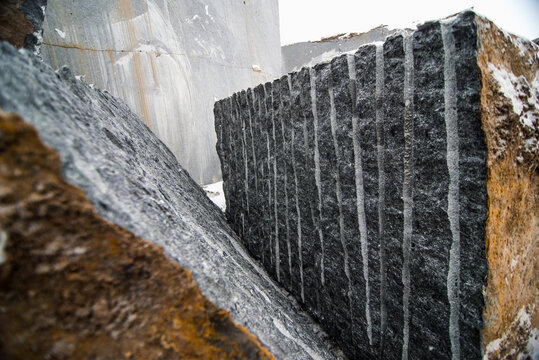A Trip Through Granite Quarries in South Africa: Introduction Nature's Artistry
A Trip Through Granite Quarries in South Africa: Introduction Nature's Artistry
Blog Article
Revealing the Mysteries of Granite Quarrying: Where Toughness and Elegance Meet
The globe of granite quarrying is a realm where the raw toughness of nature converges with human creativity to develop structures that stand the test of time with an air of elegance. From the midsts of quarries to the meticulous sprucing up in workshops, the procedure of transforming granite into building wonders is an intricate dance of custom and technology. As we peer into the depths of this ancient craft, we start to reveal the covert ins and outs that shape the extremely significance of our built atmosphere.
The Beginnings of Granite Quarrying
In the record of building history, the origins of granite quarrying are shrouded in a tapestry of old workmanship and geological wonders. Going back to old Egypt and Mesopotamia, the removal of granite from quarries noted the beginning of a journey that would ultimately cause the production of some of the world's most renowned structures.
Granite quarrying's roots can be traced to the proficient craftsmens who recognized the stone's longevity and aesthetic charm. With a mix of primitive devices and large resolution, these very early quarry workers discovered granite blocks that would become the foundation of worlds.
As worlds developed, so did the techniques of quarrying granite. The Romans, renowned for their engineering prowess, created innovative approaches for drawing out granite to create monoliths, holy places, and roads that stood the test of time.
The legacy of these old quarrying techniques remains to form contemporary architecture, with granite remaining an icon of stamina and beauty in construction projects around the world. (granite quarries in south africa)
Tools of the Quarrying Profession
The development of granite quarrying methods from ancient human beings to modern-day times highlights the vital role played by the devices of the quarrying trade in forming the industry's practices. In old times, quarrying tools were simple, usually including knives, hammers, and wedges made from materials like bronze or iron. These tools required substantial manpower and time to remove granite blocks from quarries.

Additionally, the introduction of pneumatically-driven tools and high-powered equipment has actually dramatically lowered the physical labor required in quarrying operations, improving employee safety and security and performance. As the quarrying sector proceeds to introduce, the devices of the trade stay at the leading edge of driving progress and shaping the future of granite extraction.
Removing Blocks of Granite
Making use of precision equipment and progressed methods, the removal of granite obstructs from quarries has come to be an advanced process in the contemporary quarrying industry. Regulated blasting strategies Extra resources are then employed to break apart the granite into convenient sections.

Sprucing Up and Ending Up Methods
To achieve a perfect surface on granite blocks, proficient artisans utilize a collection of meticulous sprucing up and finishing methods. After the first extraction and forming procedures, review the granite obstructs go through a thorough polishing stage to enhance their natural elegance and resilience.
In addition to polishing, finishing techniques are applied to further refine the granite's appearance. By carefully selecting and using these brightening and ending up strategies, craftsmens can change raw granite blocks into splendid pieces Related Site that showcase both strength and elegance.

Environmental Influence and Sustainability
With the expanding emphasis on environmental consciousness in the sector, granite quarrying techniques are increasingly inspected for their effect on all-natural sources and long-lasting sustainability. In addition, the transportation of granite from quarries to refining centers generates carbon emissions, even more adding to ecological destruction.
To mitigate these impacts and guarantee sustainability in granite quarrying, market stakeholders are embracing numerous procedures. Implementing advanced technologies to decrease energy consumption and water usage, recovering quarried land for environmental repair, and promoting accountable sourcing methods are some methods being utilized. Moreover, accreditations such as the Woodland Stewardship Council (FSC) and the Leadership in Energy and Environmental Layout (LEED) aid consumers identify environmentally pleasant granite items.
Verdict
Finally, granite quarrying is a process that calls for specialized devices and techniques to remove blocks of granite and polish them to a high degree of surface. While the environmental influence of quarrying can be considerable, efforts are being made to enhance sustainability practices in the sector. In general, granite quarrying is a fragile equilibrium in between using the toughness and sophistication of this all-natural rock while decreasing its effect on the setting.
Report this page